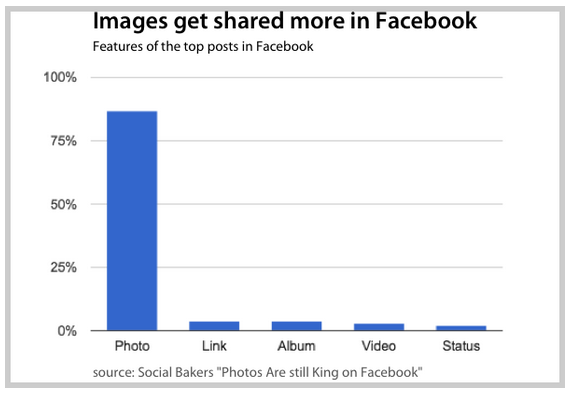The Internet is packed with tips, tactics and strategies for boosting your inbound marketing. So when should you act on the advice? Here are a few ideas on what prompts me to integrate new tactics or strategies into my workflow.
Our blog is designed to help small marketing departments walk that line between innovation and efficiency. We want to present ideas that help you stay ahead of the curve, yet implement strategies and tactics that really make a difference.
Small marketing departments don’t have the time or resources to make a major dice-roll. Neither do we, for that matter. So how do we choose from all the advice floating around the Internet?
Drinking from the firehose
I read a tremendous post by Andy Crestodina about adding great pictures to every post. Andy provided a boatload of tactics and tools for inserting images into your blog posts. In fact, the post was so packed with info that I was scratching my head when I reached the end.
How in the world was I going to implement all that Andy had to recommend?
Here are some questions you should ask to help make your decision:
1. Is there a stat to back up the strategy?
How many blog posts promote a strategy or a tactic, but have no data to back up its validity? Now don’t get me wrong — much of marketing is based on taking a chance on a strategy that you think will work (more often than not based on gut-hunch) and then evaluating the results at the end of the day.
However, you should always look for stats that back up the advice. Here Andy backed up his claim that adding an image to a blog post will help it gain more visibility by showing how images get shared more in Facebook:
2. Do you have time?
Once you’ve decided that the tactic sounds good — in this case, for example, you have to determine what fits your schedule.I always look for what requires the minimal amount of work but still achieves the end result: A quality post. In this case, I decide I’m going to follow Andy’s advice and use Canva to produce an image with a headline (very easy and fast).
If that works out nicely, I’ll circle back to Andy’s description of creating my own gifs and experimenting with some of the diagramming tools. If I can make the gifs quickly and they look good, I can integrate it into the workflow, as long as they don’t take hours.
3. Do you have the expertise?
Many of the tactics Andy describes require a bit of creative artistry to bring them to life. Note at the end of his post he writes “I’ll admit, we have a design team that often beautifies my blog images.”Andy himself is a very good writer, so besides his design team, he can produce some excellent headlines. But if it’s not in your wheelhouse, you might need to call in the professionals for some of this work.
Be on the guard against overkill in this area: It’s a blog, so there is a certain degree of informality. But if you find it really isn’t your cup of tea, then outsourcing might be the right call.
4. Do you have a testing mechanism in place to make sure it’s the right call for your blog?
Once you’ve got the tactic lined up, you need to test it. Andy’s recommendations are great, but are there particular ones that will work better for your blog? For example, readers of financial content may opt for charts and other graphic-representations of data. The client that’s selling a lifestyle product may choose a funny meme. Maybe they both work.

The analytics should show which tactic works best, but only if you have a pre-determined goal set before the test period. In other words, do you have a research hypothesis? For example, are you of the belief that bar charts work better than memes for your financial crowd, and do you have a testing method to prove it?
This can get a little tricky, as the parameters of your test have to be set up to minimize variables. And you also want to be careful that you’re not getting too caught up in minutia.
I would really focus tests like this on anything that takes a lot of time — for example, if a slideshare presentation takes four hours to produce and embed in a post, but it results in 4x the shares, then you have some good data to make a business decision.
- Are you separating tactics from best practices? Note that some parts of a post may point out best practices, and some show tactics. Andy notes a best practice regarding images: “Make your blog images the full width of your blog’s content area (usually 600 or 650 pixels wide) and half as tall.” This ensures the image won’t get cropped on social media.That’s more of a rule than a tactic, and you can and should integrate that into your processes.
- Are you choosing trustworthy sources for advice? Beware the random advice giver who appears to be generating content just to spike traffic. Look for well-thought out advice backed by solid industry pros.
There is an extraordinary amount of content out there, but much of it contains some very ordinary advice. Look before you take the next digital leap. It may be a bit time consuming, but slow and steady wins the race, right my friends?
Find out how your content and conversion ranks with our interactive version of the Content Scorecard you can fill in yourself – no email required for download.


